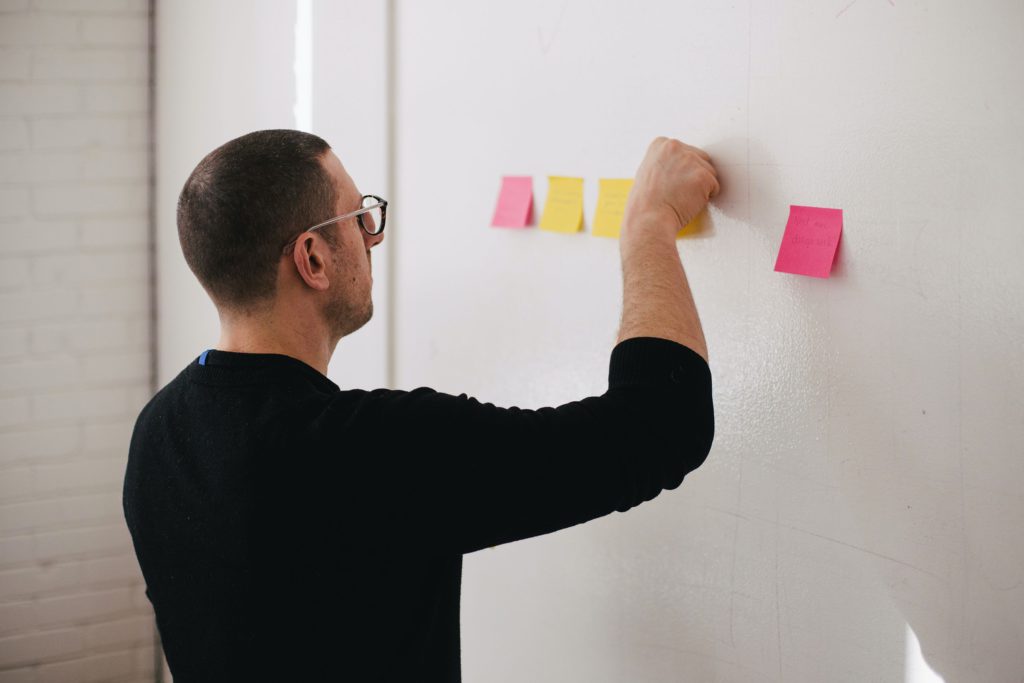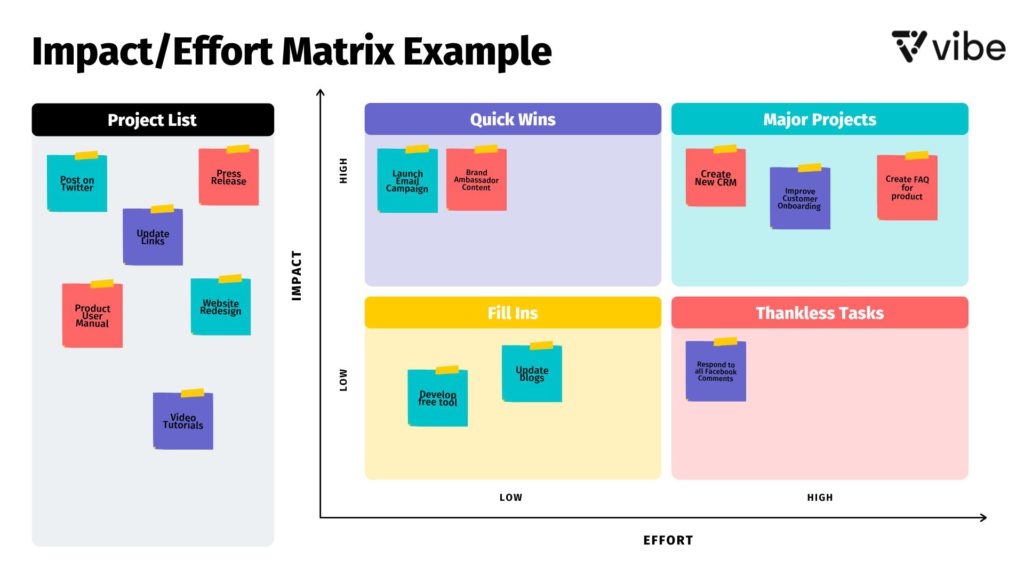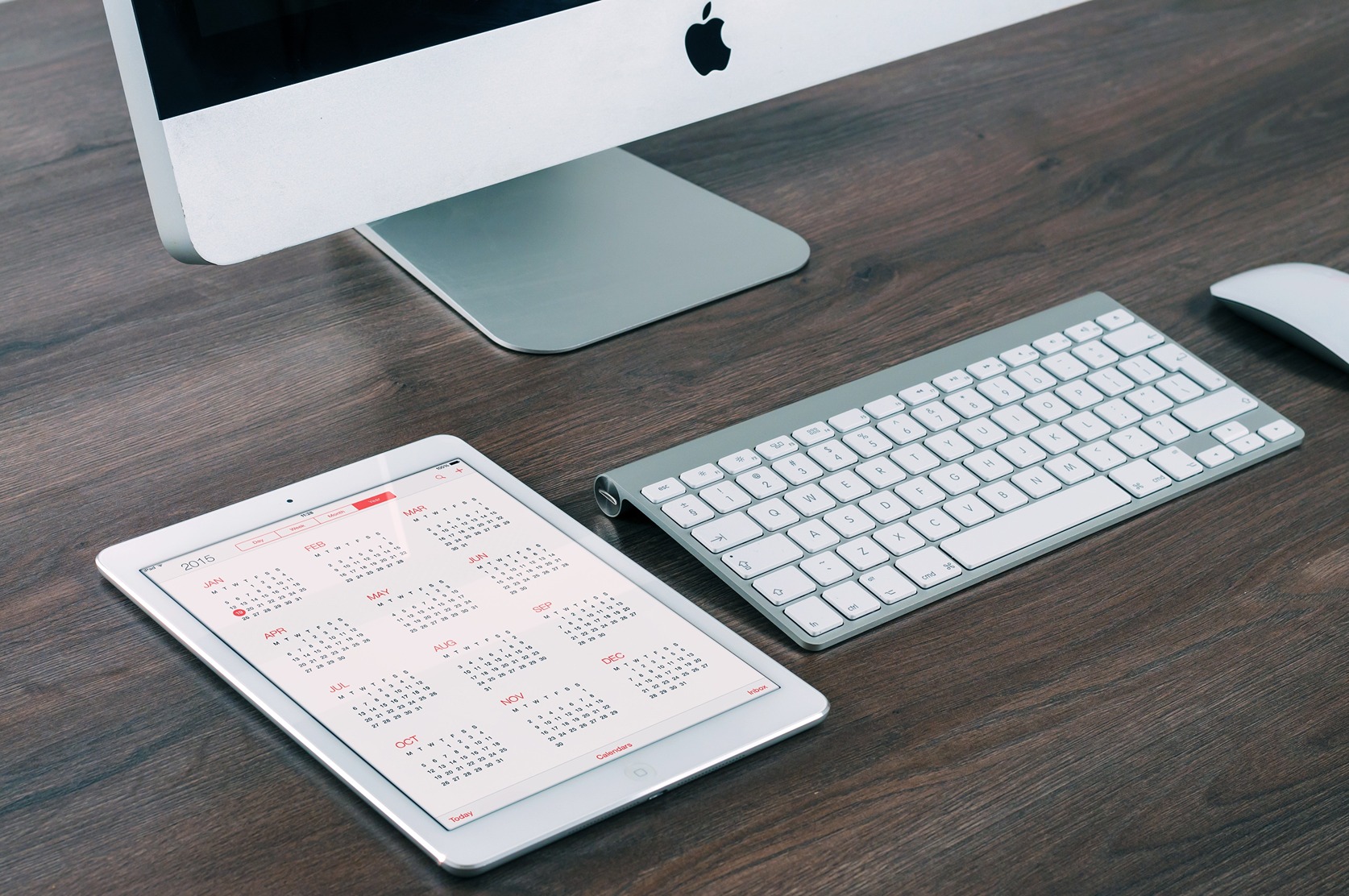One of the major challenges that business owners and project managers commonly face is determining how they can make the most efficient use of their time and resources. For instance, is it preferable to emphasize low-impact projects because they demand a comparably low amount of work, or should the focus be working on high-impact projects?
It’s possible that if you put all of your work into high-end tasks, you’ll end up with a great outcome, but there’s no guarantee of that happening. Even if you do work on the task, it could happen that by the time you complete it, someone else takes away the opportunity.
So, which project would you recommend picking? It’s not an easy choice, but making use of an Impact Effort Matrix may help make things a little clearer.
Let’s discuss what the Impact Effort Matrix is, why you would want to use it, and how to start adopting a matrix to prioritize tasks right now.
What Is An Impact Effort Matrix?

An Impact Effort Matrix, also known as a 2×2 matrix, is a useful tool for organizing and prioritizing work. The prioritizing process involves weighing the work required for a task against the effect it will have.
The most common method of developing an Impact Effort Matrix is via group discussion. By doing this, you can easily see how many tasks each team member has to work on. Then you’ll know how urgent the tasks really are.
The goal of this exercise is to help you choose the optimal sequence of tasks to do so that you can maximize your impact while minimizing your work.
Generally speaking, your attention should be directed toward the activities that require the least resources yet have the greatest payoff. But it doesn’t mean you should ignore the small tasks you can do to have an impact. Even those tasks may be useful sometimes.
How Does An Impact Effort Matrix Work?

An Impact Effort Matrix Template usually consists of four quadrants, each of which is designated to fit the relevant tasks:
-
Low-effort and low-impact: These tasks, often known as "fill-ins," involve very little work and have a negligible impact on your clients.
-
High-effort and low-impact: Tasks that demand a lot of your time and energy but don’t have much of an effect on your clients. These activities are often referred to as pointless or tedious.
-
High-impact and low-effort: These are easy victories; they have a big effect with little time or energy required. These are low-effort methods that have a huge effect on your clients.
-
High-effort and high-impact: Large projects that will have a significant effect on your client and need a lot of time and work.
When you divide your work into these four categories, it’s much simpler to see which efforts will have the greatest positive impact on your clientele.
What Is An Impact Effort Matrix Used For?

An Impact Effort Matrix helps prioritize your tasks in order to get everyone on the same page with the company’s goals. This activity is used by several companies to include all team members in the creation of the project plan.
By using an Impact Effort Matrix, companies can prioritize their efforts to identify which tasks need their attention and which can be ignored. Since each company has a certain amount of time and money to allocate to projects, the matrix is essential for making the most of a company’s limited resources.
When confronted with obstacles in ongoing projects, some companies also turn to the matrix for guidance. Projects may go off the rails, lose focus, and produce outcomes that aren’t in line with corporate goals if the project plan and other challenges aren’t managed properly. Teams can use the matrix to decide on approaches that will bring the projects back on track.
Using the matrix, you can maximize your time spent on research. The majority of companies nowadays recognize the value of careful planning before jumping into a new endeavor. The matrix simplifies the process of identifying issues and finding solutions, helping teams to focus on what matters most.
How to Create an Impact Effort Matrix

Here is a step-by-step guide on how to create an Impact Effort Matrix:
-
Get Everyone Together
First, get everyone on the team together. It’s very necessary that the matrix be completed by actual stakeholders, as they have a clear understanding of how things are performed and the amount of work that’s necessary.
-
Identify Goals and Objectives
Hold a session of brainstorming to determine what the primary aims and team goals are. This brings the team’s focus back to the larger objective.
-
Design the Matrix
On a big piece of paper, design the Impact Effort Matrix, a grid with four quadrants depending on the overlapping between effort and impact. You could also use a digital tool such as an interactive whiteboard to brainstorm and draw an Impact Effort Matrix template.
Impact flows along the y-axis. The higher up you are, the greater effect you will have. The x-axis on the bottom of the graph represents effort. The farther to the right you go along this axis, the more difficult the work or project will be.
-
Share Your Ideas
Direct everyone to jot down a list of all the projects and activities they’re presently working on, including any routine work.
-
Designate the Tasks
The next step is for you to instruct everyone to put their notes on the matrix according to where they think they should be. Have a discussion with the whole team about whether or not the location they’ve chosen for their tasks and projects is appropriate.
-
Create An Action Plan
Develop an action plan depending on your research results. If you have an awareness of the effect and effort of each work, you will be able to identify which tasks merit the most resources and time in the future and allocate them accordingly.
Impact Effort Matrix Example
Here’s a helpful Impact Effort Matrix example:

Suppose you’re setting up advertisements on Facebook for a product that you have just launched.
In this case, you would sit down and devise a strategy and timetable for getting started on those tasks that have a high return on investment but need a greater amount of effort. This would include considering the introduction of a new CRM and working to improve the customer onboarding procedure.
In case you have some idle time or need some filler projects, you can focus on things that not only had a minimal effect but also required a low amount of effort. In this Facebook marketing context, it would mean developing a free tool for your campaigns.
Keep in mind that the emphasis you give to certain factors depends on you, the needs, and the available resources for your business. What requires little effort from you may require a lot of time and energy for someone else. Something that has less of an effect on your company may have a big effect on another. Prioritize them accordingly.
Create Your Impact Effort Matrix with Vibe Boards

Built on a highly adaptable OS, Vibe is an interactive whiteboard device that lets teams customize their workflow with a variety of different digital tools and applications. The adaptability and personalization of Vibe make it an ideal platform for project management and team collaboration across all sectors.
Using the templates available on Vibe, you can compile a list of tasks and designate them to a specific order of importance. This format allows everyone in your team to see the items on the list and provide ideas. Additionally, you can set priorities for things and monitor the progress of projects to better coordinate the efforts of your team.
With Vibe, you can start a brainstorming session on your Vibe Board and have your team members edit, mark up, and share their thoughts in real-time in Vibe Canvas, whether they’re in the office, working from home, or on the go. Vibe helps spark better team collaboration from wherever you work best.
Simplify the process of building your Impact Effort Matrix with Vibe.
FAQs
-
What are the 4 quadrants of an Impact Effort Matrix?
The 4 sections in an Impact Effort Matrix are:
-
High impact/low effort: Although such alternatives are uncommon, they must be selected whenever possible. The optimal point on an Impact Effort Matrix is reached when substantial outcomes are achieved with very little effort.
-
Low impact/low effort: Since they don’t pay off, it’s usually not worth it to waste time on these. However, developing these may be required to sustain high-impact projects.
-
Low impact/high effort: Any choice found in this section of the matrix should be disregarded unless it is an absolute necessity. These use a lot of energy without providing anything in return.
-
High impact/high effort: This section is where the most discussion is needed. There is a level of risk because of the considerable effort needed. The optimal course of action in this area will be determined after careful discussion with your team.
The impact effort method provides companies and project leaders with an easy method to decide the optimal action to take in a variety of different scenarios. It is also something that can be done rapidly and effectively by them, which enables a company to chart its future without any delay.








-1sbltxxq4FYxHrXrwJVLsCDNsXpqNa.webp)
-5Zp0pmSytvcuYDVs1LvuwplKuRneK0.webp)
